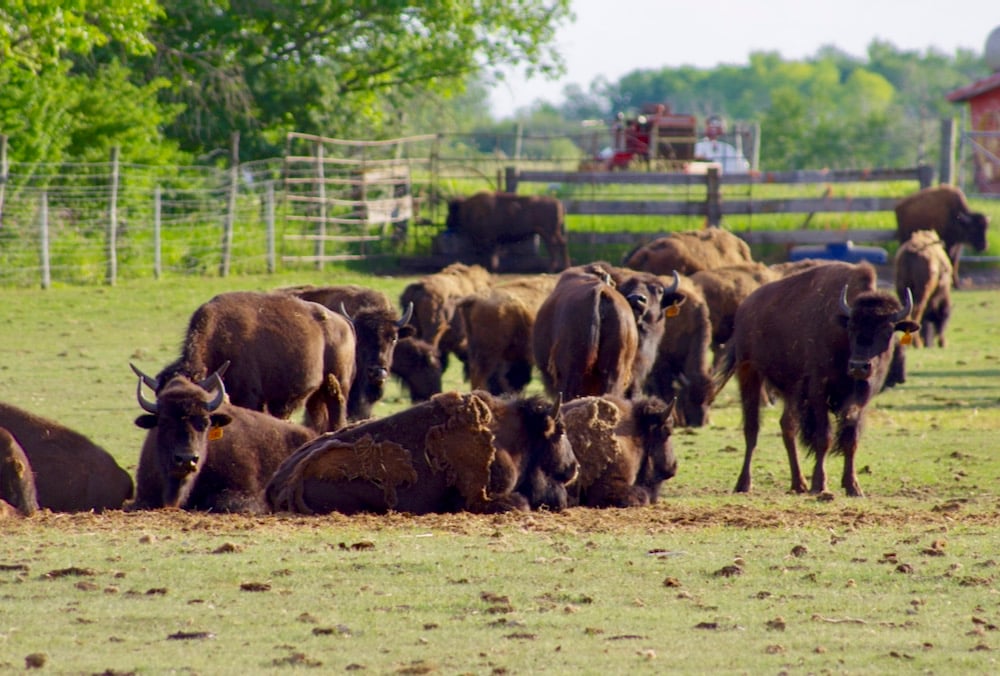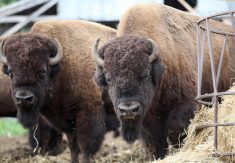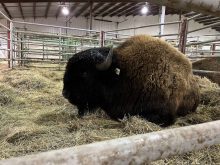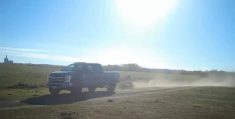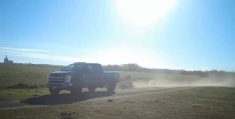Bison producers may soon expect more money, should the Canadian Food Inspection Agency (CFIA) ever order some of their stock euthanized due to disease threat.
Why it matters: The bison industry says, previous to proposed changes, market value was far outstripping what it could have expected to be paid by the CFIA for destroyed stock.
The July 10 release of the Canada Gazette included proposed changes to maximum compensation levels, an issue the industry has pushed for years.
Read Also

Manitoba Ag Days plans star-studded speaker lineup
Dragons’ Den panellist Arlene Dickinson among speaker series highlight for 2026 Manitoba Ag Days in Brandon, alongside slate of agriculture experts.
Compensation caps were last set in 2007, with the bison sector arguing that market prices had significantly risen since that time.
Under the changes, maximum compensation for a bull bison one year old or older would over double, from $4,000 to $10,000. All other bison, meanwhile, would see maximum compensation jumps from $2,500 to $6,000 an animal.
That is the maximum range, the CFIA has said, and largely reflects the value of high-value breeding stock. The CFIA has said that actual compensation is based on the value that animal might have brought to market, minus the carcass value.
The point of the compensation, according to the federal agency, “is to encourage the early reporting of animal disease and the co-operation of animal owners in the CFIA’s efforts to control a disease.”
Industry happy
It’s a change that’s been a long time coming, Canadian Bison Association (CBA) chair Les Kroeger said.
“It’s a significant improvement,” he said. “We’ve been working at this since 2017 and it’s finally got to this point.”
The main challenge was price discovery. While producers felt that compensation levels were capped too low, bison was and is a much smaller market than, for example, the cattle industry, where there are regular and frequent market reports to hone in on price.
In comparison, Canada’s bison producers might see one or two bison sales per month.
“With a small industry like ours, there’s limited numbers of markets available,” Kroeger said. “The slaughter numbers or the slaughter markets, we can set. Price discovery there is relatively easy. When it comes to breeding stock, there’s limited numbers of breeding stock sales and outlets for bison.”
The CBA had initially pushed for a higher cap than the proposed increase. According to a background document published by the CFIA, in 2017 the association had suggested a cap of $15,000 for bulls one year and older and $7,500 for all other bison.
“Yes, our numbers did look a little bit different,” Kroeger said, although he said the association had initially hoped for a $17,000 top price.
The CFIA “completed a preliminary analysis and engaged in discussions with the CBA,” the agency said. “At the end of 2018, the CFIA shared the results of this preliminary analysis, which acknowledged a lack of data to support CBA’s recommended amounts.”
In 2020, the CBA suggested that the CFIA turn to the association’s national shows and sales for data. The CFIA eventually turned to data from auction reports gathered between 2009 and 2019.
Inflation, and anticipated inflation, also added into the CFIA’s new proposed cap.
More work?
One industry ask is not reflected in the proposed changes. The CBA had previously argued that the two classifications (bull one year old or older and all other bison) was too general, and didn’t take into account different types of bison on the market. Feeders, for example, were lumped into the same category as breeding stock.
For now, the proposals stick to the two-class system.
Future changes to that “would be good,” Kroeger said, although he wasn’t sure “whether we put much energy into it.”
“There’s room to work within the program the way it is right now,” he said of the proposed changes. “Yes, it could be improved, but this is significant enough that at least producers are going to be compensated as fair as we possibly can.
“You’re never going to have perfection, no matter how it’s structured,” he added.
It is also a policy currently impacting relatively few animals.
There have been no huge payouts from the CFIA in regards to destroyed bison stock in the last 20 years, Kroeger said. Rather, the higher cap is security, in case there is a more significant disease issue in the future.
According to the CFIA, there have been no cases where producers were compensated for destroyed stock since 2013.
The Canadian Gazette article, “was fair,” Kroeger also said. “It explained a lot of the price discovery procedure.”
The one big issue Kroeger noted was timeline. It took about five years to have changes brought forward, he noted, a time frame that the sector would like to see compressed the next time values have to undergo a reassessment.
Consultation on the changes is open until Sept. 22.


